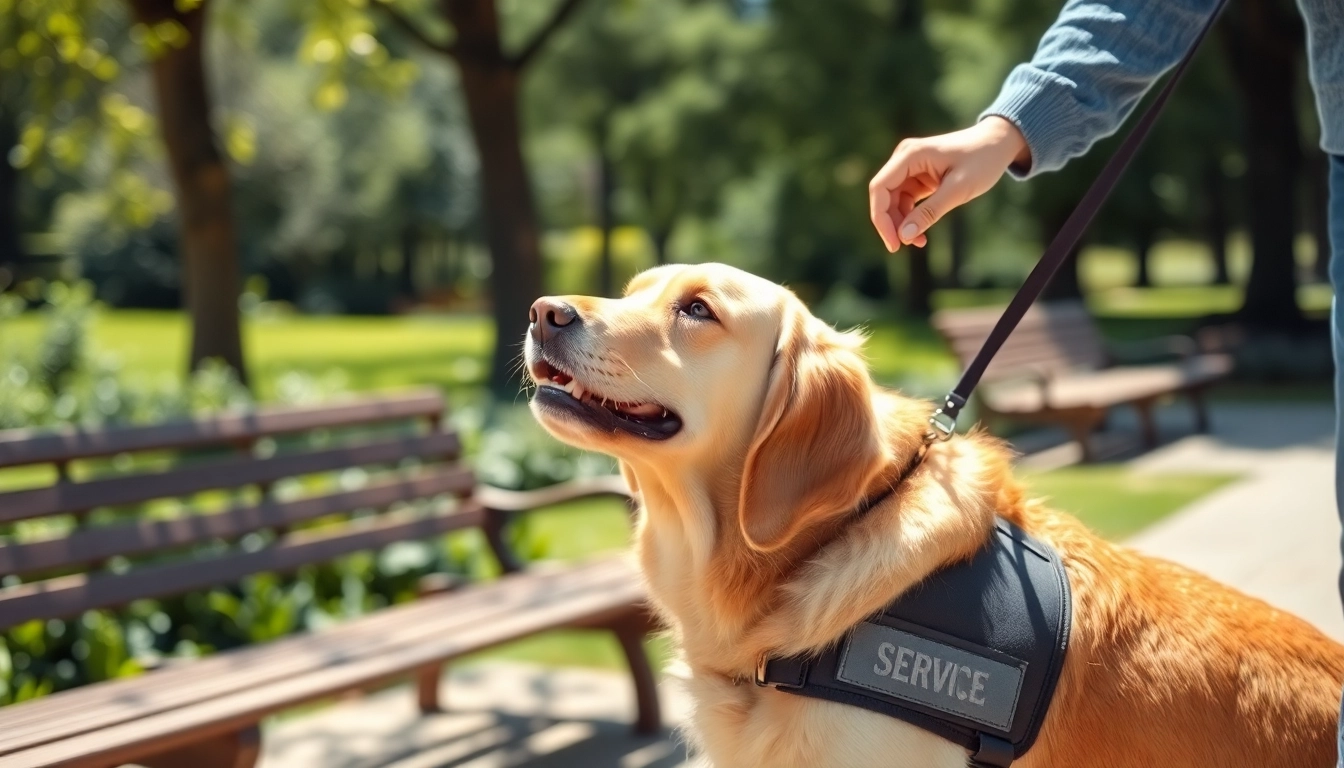Understanding Service Dogs
What is a Service Dog?
A service dog is a specially trained canine that assists individuals with disabilities by performing tasks directly related to their handler’s needs. Unlike emotional support animals or therapy dogs, service dogs undergo extensive training to perform specific functions that aid their owners. These functions may include guiding a visually impaired person, alerting a deaf individual to sounds, or retrieving items for individuals with mobility challenges. Service dogs are recognized by law as working animals, not pets, and they have the right to accompany their handlers in almost all public spaces.
Types of Service Dogs
There are various types of service dogs, each trained to assist with specific disabilities. Some of the most common types include:
- Guide Dogs: Help individuals who are visually impaired navigate the world.
- Hearing Dogs: Alert deaf or hard-of-hearing individuals to important sounds, such as alarms or doorbells.
- Mobility Assistance Dogs: Aid those with physical disabilities by fetching items, opening doors, or providing stability.
- Medical Alert Dogs: Trained to alert their handlers to medical conditions such as seizures or low blood sugar.
- Psychiatric Service Dogs: Assist individuals with mental health disabilities by providing comfort and performing tasks that mitigate their conditions.
Legal Rights and Regulations
In the United States, service dogs are protected under the Americans with Disabilities Act (ADA), which grants them the legal right to accompany their handlers in most public spaces. This law stipulates that service dogs must be trained to perform tasks directly related to a person’s disability. While businesses can request proof of service status, they cannot demand documentation or require a service dog to wear identifying vests. Understanding these legal rights is crucial for individuals seeking to get a service dog.
Eligibility Criteria to Get a Service Dog
Medical Documentation Requirements
To qualify for a service dog, candidates typically need to provide documentation from a qualified healthcare professional. This proof confirms the presence of a disability necessitating the assistance of a service dog. It’s essential to work with a relevant health professional who understands how a service dog can effectively support your specific needs.
Disability Types that Qualify
Various disabilities can qualify individuals for a service dog. The ADA recognizes both physical and mental health conditions, including but not limited to:
- Visual impairments
- Hearing impairments
- Mobility impairments
- Seizure disorders
- Post-Traumatic Stress Disorder (PTSD)
- Autism Spectrum Disorders
Individuals must demonstrate how a service dog will help alleviate specific challenges resulting from these disabilities.
Assessing Personal Needs
Assessing your needs involves an honest evaluation of the day-to-day challenges faced due to your disability. This could include considering tasks that are particularly tricky to manage alone, social situations that are overwhelming, or anxiety triggers. Understanding your unique requirements will inform the type of assistance you need from a service dog, helping you choose the right program or agency for training and placement.
The Process to Get a Service Dog
Where to Start Your Journey
The journey to acquiring a service dog begins with thorough research. Start by identifying reputable organizations or trainers that specialize in service dogs. Look for programs that adhere to ADA standards, ensuring they are well-regarded and provide quality training. Online resources, community forums, and local support groups can be invaluable in locating suitable options for assistance.
Training Programs Overview
Training programs for service dogs vary significantly. Some organizations provide fully trained dogs, while others offer programs that allow you to train your own dog. Key factors to consider when examining training programs include:
- Accreditation: Look for programs accredited by recognized organizations.
- Training Methods: Ensure that training methods are humane, positive, and result in well-socialized dogs.
- Program Duration: Understand how long the training will take and what ongoing support is provided.
- Success Rates: Investigate the program’s success rates in matching service dogs with individuals.
Application Procedures Explained
Once you’ve identified potential programs, the application process typically includes filling out forms detailing your needs, medical history, and your lifestyle. Many organizations require interviews and meetings to gauge compatibility between the applicant and potential service dogs. Being forthcoming about your needs during this process is crucial for ensuring a suitable match.
Costs Associated with Getting a Service Dog
Understanding Training and Placement Fees
The costs associated with getting a service dog can vary greatly. Expenses may include training fees, which can range from a few thousand dollars to upwards of $30,000, depending on the level of training, dog breed, and organization. It’s essential to obtain quotes from multiple organizations to understand the full financial scope of your endeavor.
Funding Options and Assistance Programs
Given the high costs, many individuals seek funding options to support their service dog journey. Various nonprofit organizations, grants, and fundraising campaigns exist to assist those in need of financial support. Researching these sources is vital for alleviating some of the financial burden associated with acquiring a service dog.
Financial Planning for Ownership
Acquiring a service dog is just the beginning of a long-term commitment that includes ongoing costs. Planning for expenses such as food, veterinary care, grooming, and training reinforcement is crucial. Create a budget that reflects these ongoing costs to ensure you are financially prepared for service dog ownership.
Post-Placement Support and Responsibilities
Integrating a Service Dog into Daily Life
After successfully obtaining a service dog, integrating it into your daily life is vital. Establish routines that include the dog’s needs, such as feeding times, exercise, and training reinforcement. Consistency helps solidify the bond between you and your service dog, ensuring they understand their role and functions.
Ongoing Training and Support Services
Service dog training does not stop once the placement is complete. Owners are encouraged to participate in ongoing training programs and refresher courses. Such continued education reinforces good behavior and ensures that the service dog remains skilled in performing essential tasks for its handler.
Responsibilities of a Service Dog Owner
Being a service dog owner comes with significant responsibilities. Owners must ensure their dog is well-cared for, properly trained, and socialized to handle various environments. Moreover, understanding the legal rights of service dogs and ensuring compliance with public behavior expectations is crucial for maximizing the benefits of having a service dog.



